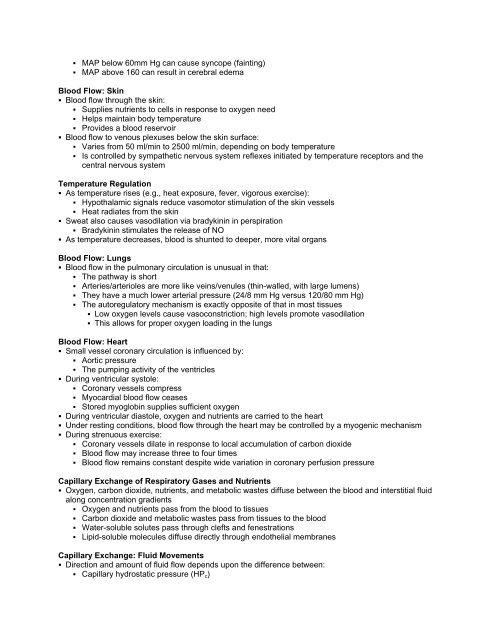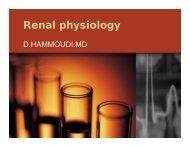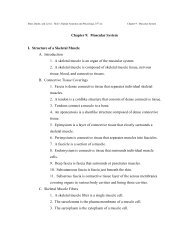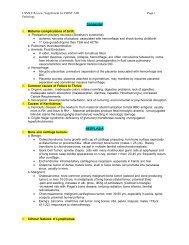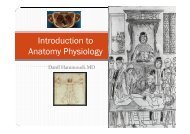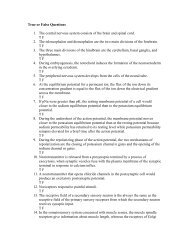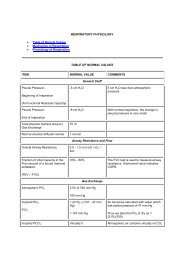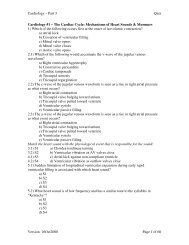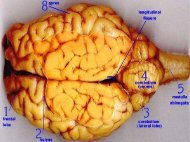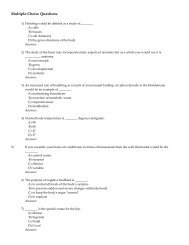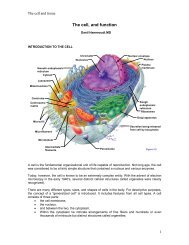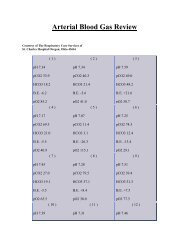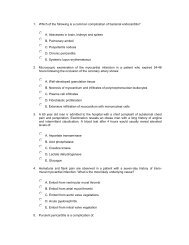Blood Vessels - Sinoe medical homepage.
Blood Vessels - Sinoe medical homepage.
Blood Vessels - Sinoe medical homepage.
You also want an ePaper? Increase the reach of your titles
YUMPU automatically turns print PDFs into web optimized ePapers that Google loves.
• MAP below 60mm Hg can cause syncope (fainting)• MAP above 160 can result in cerebral edema<strong>Blood</strong> Flow: Skin• <strong>Blood</strong> flow through the skin:• Supplies nutrients to cells in response to oxygen need• Helps maintain body temperature• Provides a blood reservoir• <strong>Blood</strong> flow to venous plexuses below the skin surface:• Varies from 50 ml/min to 2500 ml/min, depending on body temperature• Is controlled by sympathetic nervous system reflexes initiated by temperature receptors and thecentral nervous systemTemperature Regulation• As temperature rises (e.g., heat exposure, fever, vigorous exercise):• Hypothalamic signals reduce vasomotor stimulation of the skin vessels• Heat radiates from the skin• Sweat also causes vasodilation via bradykinin in perspiration• Bradykinin stimulates the release of NO• As temperature decreases, blood is shunted to deeper, more vital organs<strong>Blood</strong> Flow: Lungs• <strong>Blood</strong> flow in the pulmonary circulation is unusual in that:• The pathway is short• Arteries/arterioles are more like veins/venules (thin-walled, with large lumens)• They have a much lower arterial pressure (24/8 mm Hg versus 120/80 mm Hg)• The autoregulatory mechanism is exactly opposite of that in most tissues• Low oxygen levels cause vasoconstriction; high levels promote vasodilation• This allows for proper oxygen loading in the lungs<strong>Blood</strong> Flow: Heart• Small vessel coronary circulation is influenced by:• Aortic pressure• The pumping activity of the ventricles• During ventricular systole:• Coronary vessels compress• Myocardial blood flow ceases• Stored myoglobin supplies sufficient oxygen• During ventricular diastole, oxygen and nutrients are carried to the heart• Under resting conditions, blood flow through the heart may be controlled by a myogenic mechanism• During strenuous exercise:• Coronary vessels dilate in response to local accumulation of carbon dioxide• <strong>Blood</strong> flow may increase three to four times• <strong>Blood</strong> flow remains constant despite wide variation in coronary perfusion pressureCapillary Exchange of Respiratory Gases and Nutrients• Oxygen, carbon dioxide, nutrients, and metabolic wastes diffuse between the blood and interstitial fluidalong concentration gradients• Oxygen and nutrients pass from the blood to tissues• Carbon dioxide and metabolic wastes pass from tissues to the blood• Water-soluble solutes pass through clefts and fenestrations• Lipid-soluble molecules diffuse directly through endothelial membranesCapillary Exchange: Fluid Movements• Direction and amount of fluid flow depends upon the difference between:• Capillary hydrostatic pressure (HP c )


